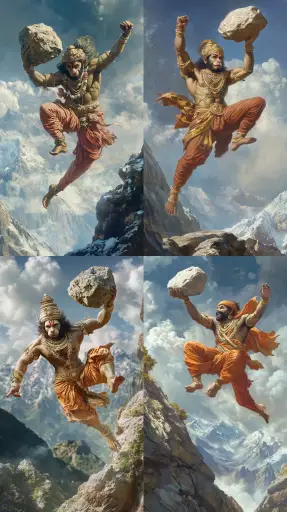Explore the Best AI Image Gallery

Beyond the Brush: How AI-Driven Visual Experiences are Transforming Creativity
The world of creativity is undergoing a seismic shift, driven by the rapid advancements in artificial intelligence (AI). AI is no longer confined to the realms of science fiction; its actively reshaping how we create, experience, and interact with visual content. From generating stunning artwork to personalizing immersive experiences, AI-driven visual technologies are blurring the lines between human imagination and machine intelligence.
A Canvas Painted by Algorithms
AI algorithms are now capable of producing breathtakingly realistic and imaginative visuals. Generative adversarial networks (GANs), for instance, pit two neural networks against each other – one generating images, the other evaluating their authenticity. This iterative process results in increasingly sophisticated and original artwork.
These AI-powered tools empower artists to explore new creative avenues. Imagine sketching a concept, and an AI instantly translating it into a fully rendered 3D model or seamlessly integrating it into an interactive environment. Artists can leverage AI as a powerful assistant, focusing on the conceptual vision while the AI handles technical complexities.
Applications Across Industries
The impact of AI-driven visual experiences extends far beyond the fine arts. Here are just a few examples:
- Marketing and Advertising: AI can generate personalized visuals for targeted campaigns, creating dynamic and engaging ads that resonate with specific audiences.
- Entertainment: Imagine movies where characters seamlessly adapt to different scenarios or video games with landscapes that dynamically evolve based on player choices. AI is pushing the boundaries of storytelling and interactive entertainment.
- Architecture and Design: Architects can utilize AI to generate innovative building designs, optimize spatial layouts, and visualize complex structures in immersive 3D environments.
Ethical Considerations: A Delicate Balance
As with any powerful technology, the integration of AI into creative processes raises ethical considerations:
- Copyright and Ownership: Who owns the rights to AI-generated artwork? The creator who provided the initial input or the AI algorithm itself?
- Bias and Representation: AI algorithms are trained on vast datasets, which can reflect existing societal biases. Its crucial to ensure that AI-generated content is inclusive and representative of diverse perspectives.
- Job Displacement: While AI can augment creative workflows, there are concerns about potential job losses in certain artistic fields. Its essential to consider the impact on the creative workforce and explore strategies for reskilling and upskilling.
The Future of Creative Expression
The fusion of AI and creativity is still in its nascent stages, but the possibilities are truly boundless. We can anticipate:
- More Personalized Experiences: AI will enable the creation of highly personalized visual content tailored to individual preferences and interests.
- Immersive and Interactive Environments: Virtual reality (VR) and augmented reality (AR) will be enhanced by AI, creating more engaging and realistic interactive experiences.
- Collaborative Creativity: AI platforms will facilitate collaboration between artists, designers, and developers, fostering a new era of co-creation.
AI is not about replacing human creativity; its about augmenting it. By embracing these powerful tools responsibly and ethically, we can unlock new dimensions of creative expression and shape a future where technology and art seamlessly converge.